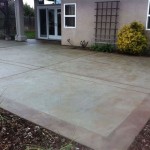Bringing The Charm Of Past To Your Patios: A Guide to Timeless Outdoor Design
The patio, an extension of the home into the outdoor realm, has evolved throughout history, reflecting the prevailing styles and values of each era. Bringing the charm of the past to patios involves more than simply replicating historical designs. It requires understanding the underlying principles that made these spaces functional, comfortable, and aesthetically pleasing, then applying these principles in a contemporary context. Successfully integrating historical elements involves careful selection of materials, furnishings, and landscaping, always keeping in mind the specific architectural style of the property and the desired atmosphere.
Creating a patio with historical charm begins with research. Delving into architectural history surrounding the property provides invaluable insights into the styles that would be most naturally integrated. Local historical societies, libraries, and online archives are excellent resources for uncovering period-appropriate designs. Examining old photographs of homes and gardens in the area can reveal common materials, planting choices, and furniture styles. This research serves as a foundation for a cohesive and authentic design, preventing a jarring contrast between the patio and the existing home.
The key elements necessary to craft a historically inspired patio space are numerous and nuanced. Attention to detail is paramount in ensuring the design feels authentic and not like a pastiche. A successful design balances historical accuracy with modern comfort and functionality, creating an outdoor space that is both beautiful and usable. This balance is achieved through careful planning and a deep understanding of the historical styles being referenced.
Key Point 1: Understanding Historical Patio Styles
Different historical periods boast distinct patio styles. Recognizing these styles helps in accurately recreating the ambiance of the past. Consider the formal symmetry of a Victorian garden patio, with its intricate wrought iron furniture, manicured lawns, and rose gardens. In contrast, a Mediterranean-style patio evokes warmth and relaxation with terracotta tiles, stucco walls, and lush greenery. A Colonial-style patio might feature brick paving, simple wooden furniture, and climbing vines. Each style necessitates a specific set of materials and design principles.
The Victorian era, for example, saw the rise of elaborate gardens and patios reflecting the growing middle class’s leisure time and interest in horticulture. These patios often featured ornate cast iron furniture, intricate mosaic tile work, and a profusion of flowers and plants. Formal layouts with structured pathways and geometric planting beds were common. Recreating this style requires sourcing high-quality cast iron furniture, intricate tile patterns, and a carefully curated selection of flowers and plants.
Mediterranean patios, on the other hand, are characterized by their simplicity and functionality. The use of natural materials such as terracotta, stone, and wood creates a warm and inviting atmosphere. Pergolas draped with vines provide shade, while fountains and water features add a sense of serenity. Recreating this style involves using warm-toned materials, incorporating water features, and planting drought-tolerant plants such as lavender, rosemary, and olive trees. The emphasis is on creating a relaxed and informal space for outdoor living.
Colonial patios, prevalent in North America, often feature simple, functional designs using locally sourced materials. Brick or stone paving is common, as is wooden furniture painted in muted colors. Climbing vines such as wisteria and honeysuckle add a touch of charm. Recreating this style involves using traditional materials, opting for simple furniture designs, and incorporating native plants. The focus is on creating a practical and understated outdoor space that complements the architecture of the home.
Furthermore, Art Deco influences can bring a touch of glamour to a patio design. This style, popular in the 1920s and 1930s, is characterized by its geometric patterns, sleek lines, and luxurious materials. Patios in this style might feature polished concrete paving, chrome furniture, and bold geometric lighting fixtures. Recreating this style involves incorporating these signature elements and paying attention to detail. The result is a sophisticated and stylish outdoor space that evokes the elegance of the Jazz Age.
Key Point 2: Selecting Historically Appropriate Materials
The choice of materials is crucial in bringing the charm of the past to patios. Using authentic materials or convincing reproductions creates a more genuine historical feel. For example, brick paving lends itself well to Colonial and Victorian styles, while terracotta tiles suit Mediterranean and Spanish-style patios. Natural stone, such as flagstone or slate, is versatile and works well in various historical contexts.
When selecting wood for furniture and structural elements like pergolas, consider the types of wood that were commonly used in the specific historical period. Oak, cedar, and redwood are all excellent choices, depending on the style. The finish of the wood is also important. For example, a distressed or weathered finish can enhance the rustic charm of a Colonial-style patio, while a polished finish might be more appropriate for a Victorian or Art Deco patio.
The use of metal is also important. Wrought iron is a classic choice for Victorian patios, while cast aluminum can provide a similar look with less maintenance. Copper and bronze accents can add a touch of elegance to various historical styles. The key is to choose metals that are appropriate for the specific period and to use them sparingly to avoid overwhelming the design.
Furthermore, consider the use of textiles. Outdoor fabrics that mimic the patterns and textures of historical textiles can add a touch of authenticity. For example, ticking stripes, floral prints, and jacquards are all appropriate choices for different historical styles. The color palette should also be carefully considered, sticking to the colors that were commonly used in the specific period. Muted tones and natural dyes can create a more authentic feel.
Attention to small details can significantly impact the overall historical accuracy of the patio. For example, using period-appropriate hardware, such as hinges, latches, and knobs, can add a touch of authenticity. Vintage-inspired lighting fixtures, such as lanterns and sconces, can also enhance the historical ambiance. The key is to pay attention to these small details and to ensure that they are consistent with the overall design.
Key Point 3: Incorporating Landscape Elements for Historical Accuracy
Landscaping plays a vital role in bringing the charm of the past to patios. Researching the types of plants and flowers that were popular during the specific historical period helps create an authentic and visually appealing landscape. Victorian gardens, for instance, often featured roses, hydrangeas, and ferns. Mediterranean patios might include olive trees, lavender, and rosemary. Colonial gardens often featured herbs, vegetables, and flowering plants like peonies and lilacs.
The layout of the garden is also important. Formal gardens with symmetrical planting beds and manicured lawns are characteristic of Victorian and French styles. Informal gardens with naturalistic plantings are more appropriate for Colonial and Mediterranean styles. The use of hardscaping elements, such as pathways, walls, and fountains, can also contribute to the overall historical accuracy of the landscape.
Consider the use of containers. Terracotta pots are a classic choice for Mediterranean and Spanish-style patios, while ornate cast iron planters are more appropriate for Victorian patios. Wooden planters can be used in a variety of historical contexts, depending on the design. The types of plants used in the containers should also be carefully considered, selecting plants that are appropriate for the specific historical period and climate.
Furthermore, consider the integration of water features. Fountains, ponds, and reflecting pools can add a sense of tranquility and elegance to the patio. The design of the water feature should be consistent with the overall historical style. For example, a formal fountain with intricate carvings might be appropriate for a Victorian patio, while a simple stone fountain might be more suitable for a Mediterranean patio.
Finally, consider the use of lighting. Period-appropriate lighting fixtures can enhance the historical ambiance of the patio. Lanterns, sconces, and string lights can create a warm and inviting atmosphere. The lighting should be subtle and understated, avoiding harsh or overly bright lights. The goal is to create a soft and inviting glow that enhances the natural beauty of the landscape and the architecture of the home.
Ultimately, bringing the charm of the past to patios involves meticulous planning, careful material selection, and a deep understanding of historical design principles. By embracing these considerations, it is possible to create outdoor spaces that exude timeless beauty and provide a unique connection to the past.

Transform A Tiny Patio Creative Tips For Charm And Function Harmony In The Garden

26 Best Patio Decorating Ideas Decor On A Budget

15 Creative Pergola Ideas For Patio Perfection Struxure

Transform A Tiny Patio Creative Tips For Charm And Function Harmony In The Garden

Transform A Tiny Patio Creative Tips For Charm And Function Harmony In The Garden

Discover The Best Patio Material For Your Outdoor Space

3 Reasons Why A Patio Is Perfect Addition To Your Outdoor Space

26 Best Patio Decorating Ideas Decor On A Budget

25 Best Patio Cover Ideas Covered Designs

26 Patio Shade Ideas To Help You Stay Cool Timbertech
Related Posts








